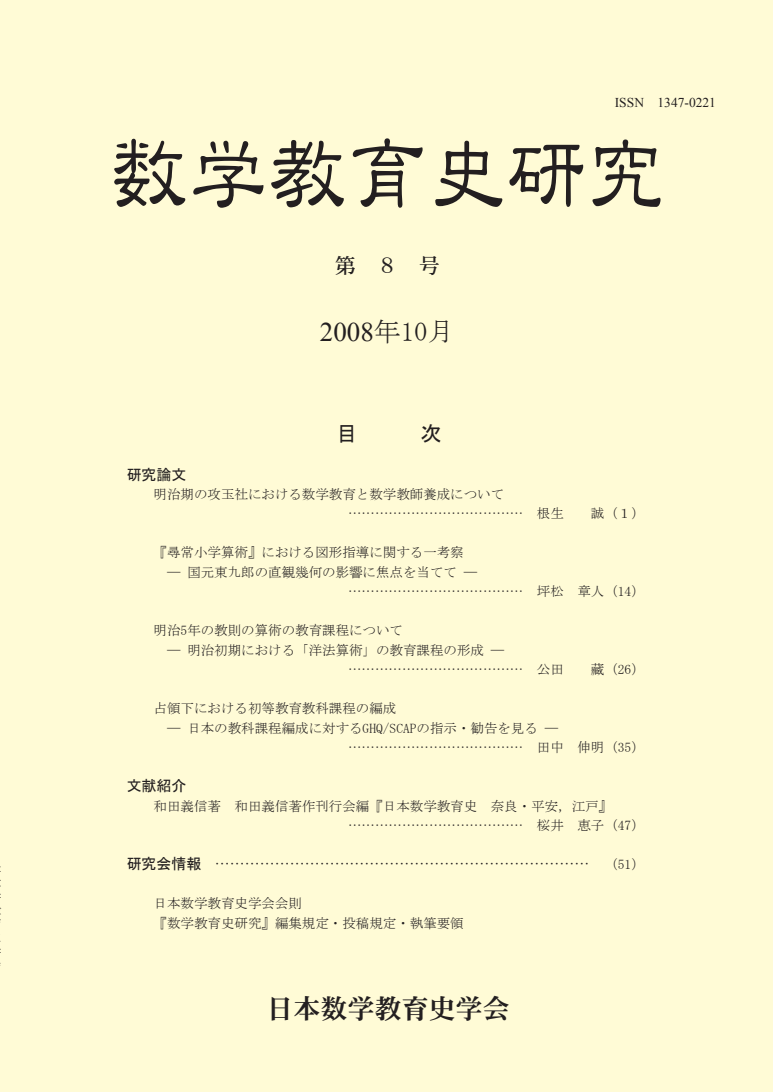8 巻
選択された号の論文の11件中1~11を表示しています
- |<
- <
- 1
- >
- >|
-
2008 年 8 巻 p. 0
発行日: 2008年
公開日: 2023/11/13
PDF形式でダウンロード (206K)
研究論文
-
2008 年 8 巻 p. 1-13
発行日: 2008年
公開日: 2022/03/10
PDF形式でダウンロード (893K) -
2008 年 8 巻 p. 14-25
発行日: 2008年
公開日: 2022/03/10
PDF形式でダウンロード (1031K) -
2008 年 8 巻 p. 26-34
発行日: 2008年
公開日: 2022/03/10
PDF形式でダウンロード (757K) -
2008 年 8 巻 p. 35-46
発行日: 2008年
公開日: 2022/03/10
PDF形式でダウンロード (2189K)
-
2008 年 8 巻 p. 47-50
発行日: 2008年
公開日: 2022/03/10
PDF形式でダウンロード (623K) -
2008 年 8 巻 p. 51
発行日: 2008年
公開日: 2023/11/13
PDF形式でダウンロード (108K) -
2008 年 8 巻 p. 52
発行日: 2008年
公開日: 2023/11/13
PDF形式でダウンロード (147K) -
2008 年 8 巻 p. 53-54
発行日: 2008年
公開日: 2023/11/13
PDF形式でダウンロード (289K) -
2008 年 8 巻 p. 55
発行日: 2008年
公開日: 2023/11/13
PDF形式でダウンロード (202K) -
2008 年 8 巻 p. 56
発行日: 2008年
公開日: 2023/11/13
PDF形式でダウンロード (205K)
- |<
- <
- 1
- >
- >|
